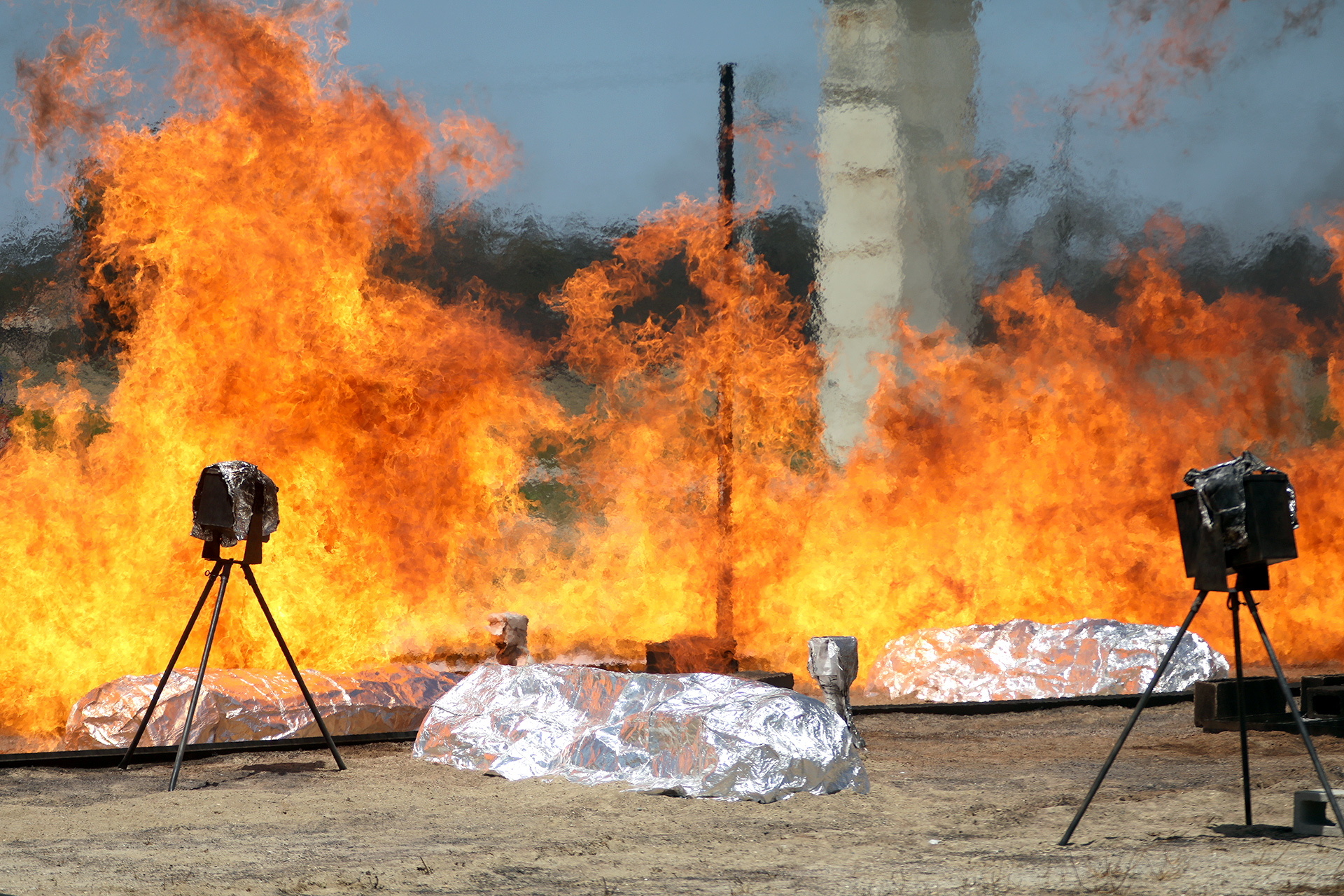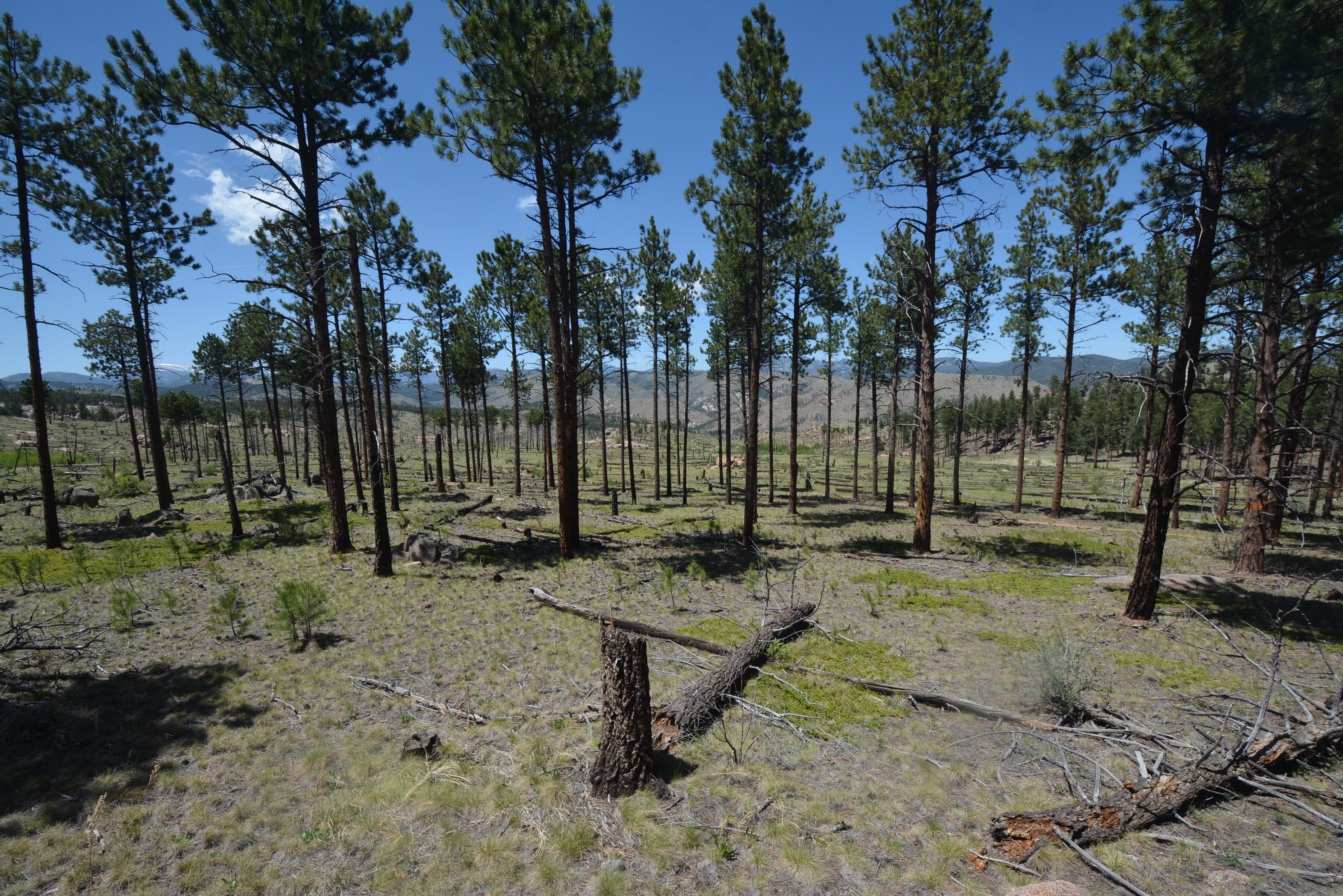Wildland fires across the West mainly occur during the hottest, driest months of summer – a time when water use is high and access to water is crucial.
Water is not only necessary for firefighters to drink and douse embers. It’s also needed for camp kitchens, showers, handwashing stations and dust abatement. The typical fire camp is a self-contained city, set up temporarily to house and feed hundreds, sometimes thousands, of firefighters and support employees.

To reduce plastic bottle use and the number of trucks needed to haul water and ice to firefighters, some federal interagency fire camps are using a mobile water treatment system to produce potable water on-site.
Recently, fire camps supporting the White River and Irving Peak Fires near Lake Wenatchee in Washington were the second units to use the new on-site water tactic. The system was first used earlier this year on the Hermits Peak/Calf Canyon Fire in New Mexico.
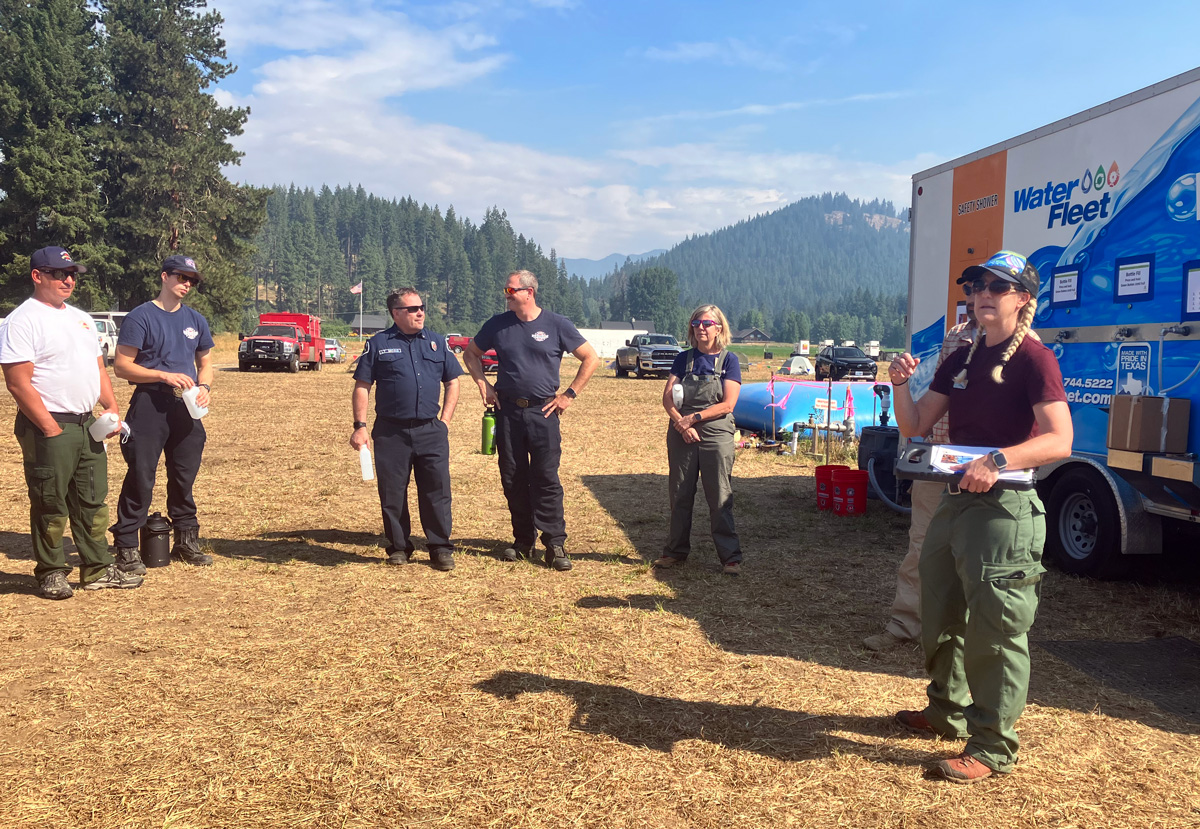
This effort is part of an interagency National Greening Fire Team working, “to achieve net zero environmental effects on all large fire incidents by 2030.” (Greening Fire Team 5-Year Strategy).
“We’re very excited to pilot this water rig system a second time,” said Kelly Jaramillo, a U.S. Department of Agriculture’s Forest Service sustainability operations specialist who also chairs the National Greening Fire Team. “This technology will help reduce plastic waste and carbon emissions here at camp, and it can help with many other communities across the West that have very strained water resources and cannot meet the potable water needs of a fire camp.”
More than 400 firefighters were staying at the Plain, Washington, fire camp while managing wildfires on the Wenatchee River Ranger District of the Okanagan-Wenatchee National Forest. According to Jaramillo, a camp this size could use 4,000 pounds of ice and about three pallets of single-use plastic water bottles daily, which is about 85,000 single-use plastic bottles every two weeks.
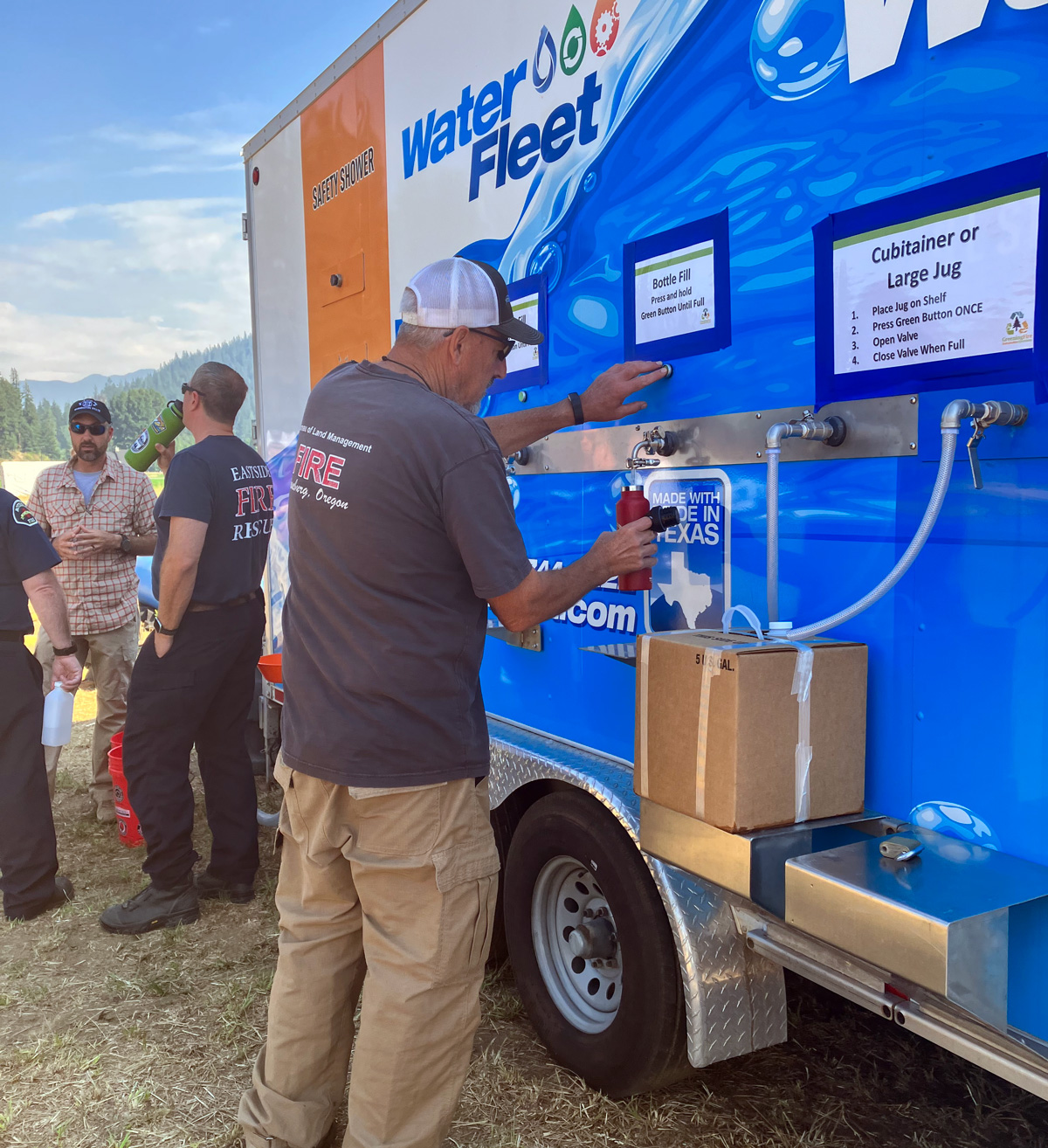
While the incident employs a recycling team to sort trash and recycle waste materials, producing potable water onsite can reduce the amount of plastic used while curbing the carbon emissions associated with transportation. Jaramillo estimates that eliminating plastic bottles in camps would reduce plastic consumption by about 93 cubic yards over a two-week period, which is enough plastic to fill nearly three school buses. It would also reduce the camp’s carbon footprint by more than 3,000 metric tons.
“Through this pilot effort, we are learning how we can provide drinking water to firefighters that’s very high quality, that they like to use in reusable jugs and bottles,” Jaramillo said. “We’re trying to move towards a zero-plastic footprint and, in the meantime, meet our potable water needs in fire camp.”
The water rigs at these fire camps were provided by one of several federal contractors that specialize in mobile water services. These same rigs previously responded to the Hermits Peak/Calf Canyon Fire and provided on-site water treatment at a remote fire camp in Pecos, New Mexico, when it became clear that the municipal water system couldn’t support its water needs. The central Washington fire camp contracted these same services to demonstrate its technology and help operations achieve sustainability goals.
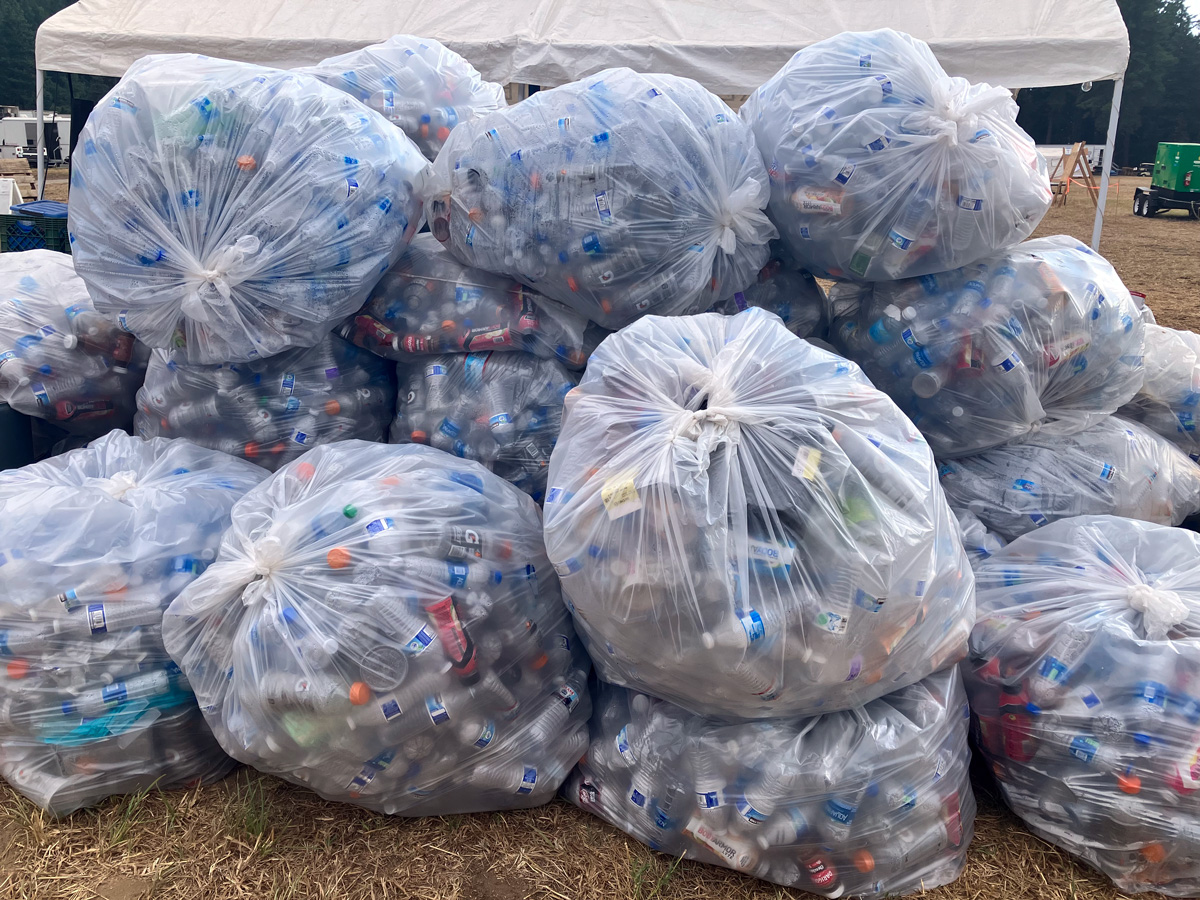
Each water rig contains a patented filtration system that can take a raw water source and turn it into a verifiable potable water source of drinking water. Each trailer can process 6,000 gallons of water and 500 pounds of ice daily.
Learn more about the National Greening Fire Team.




